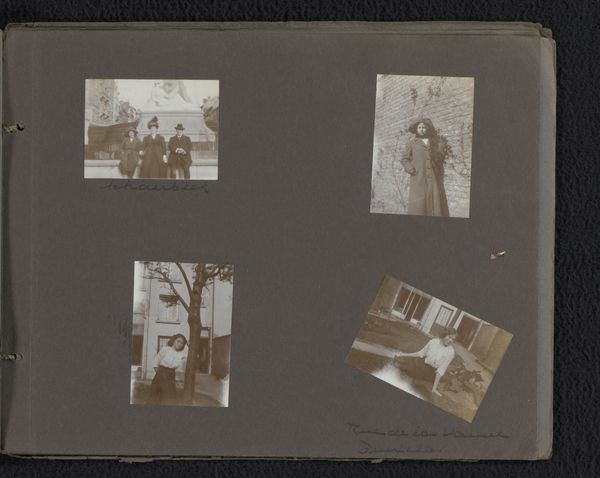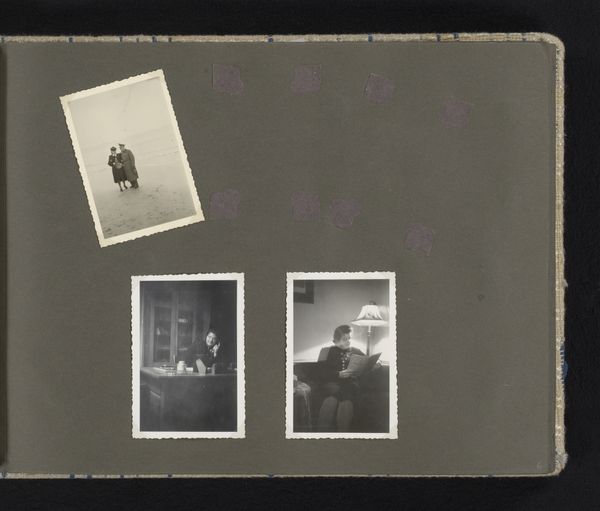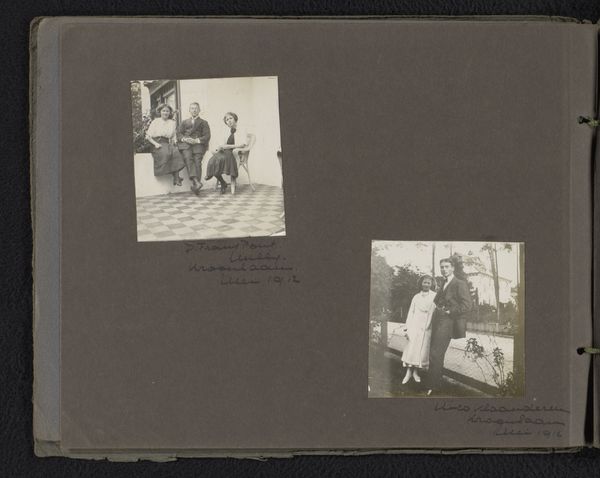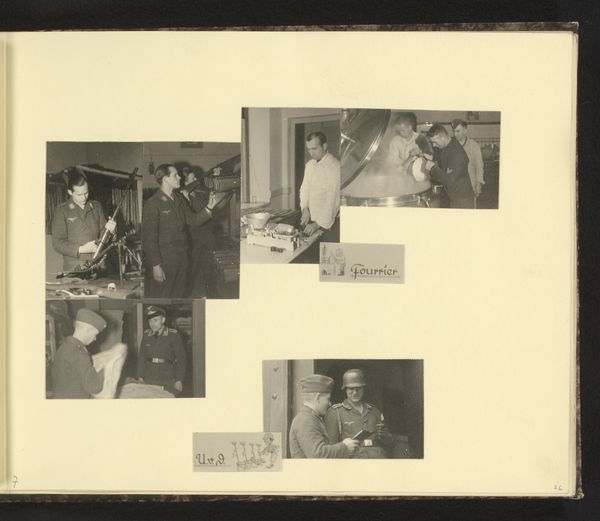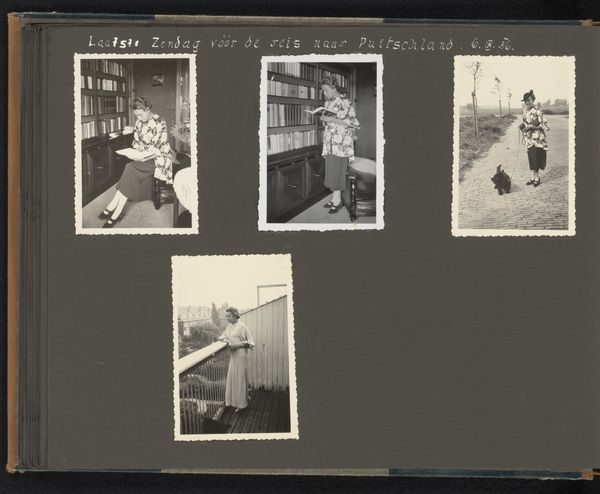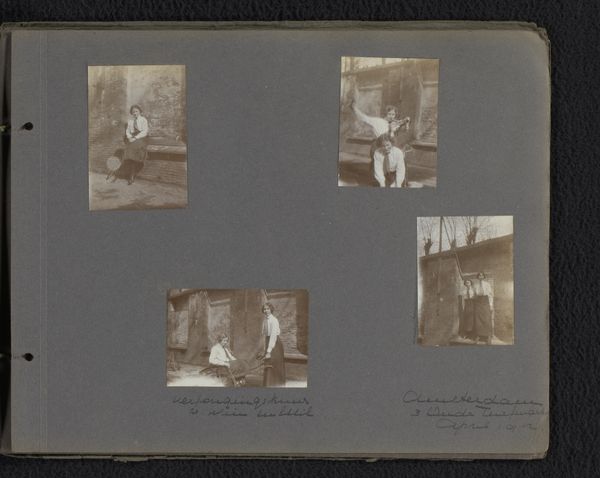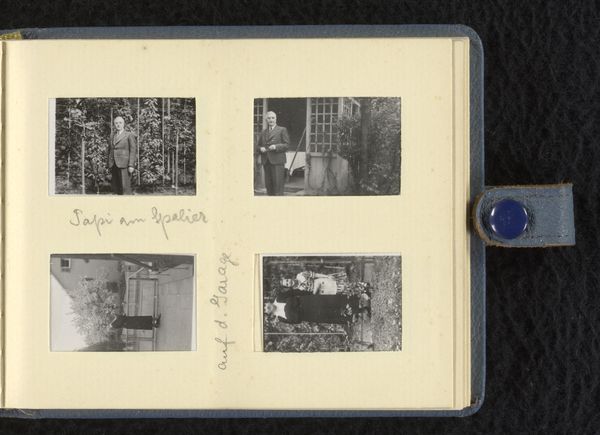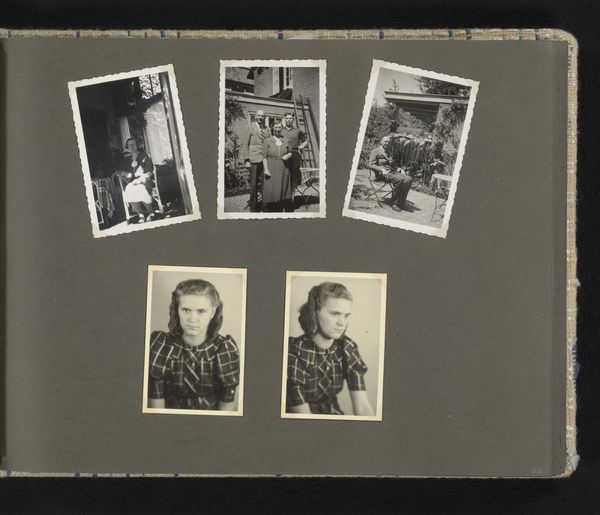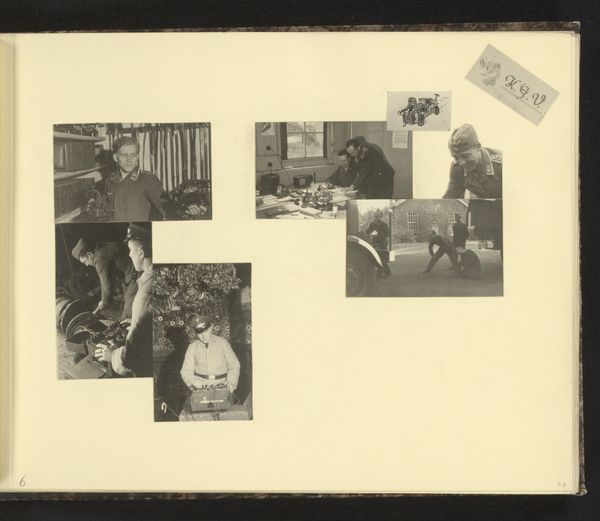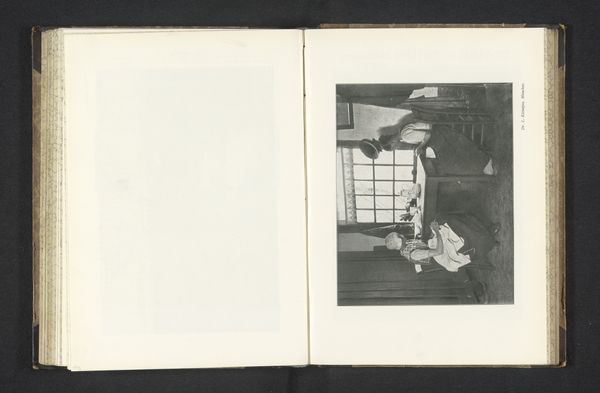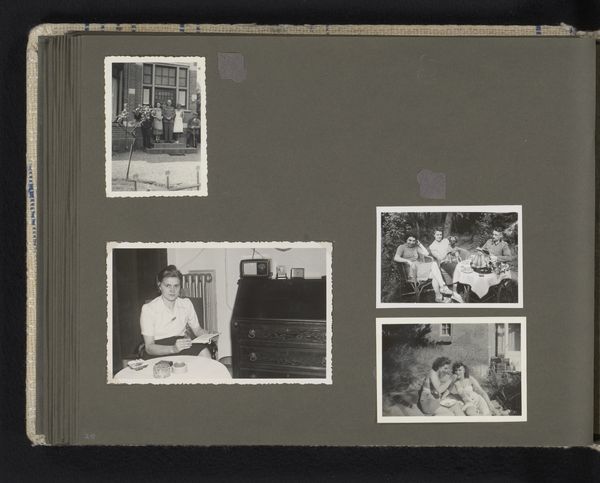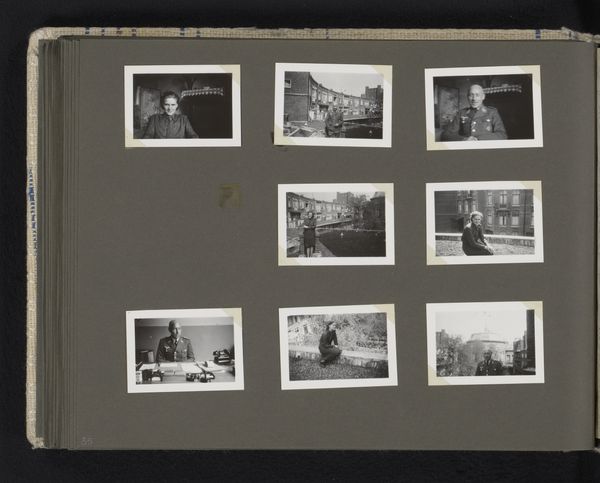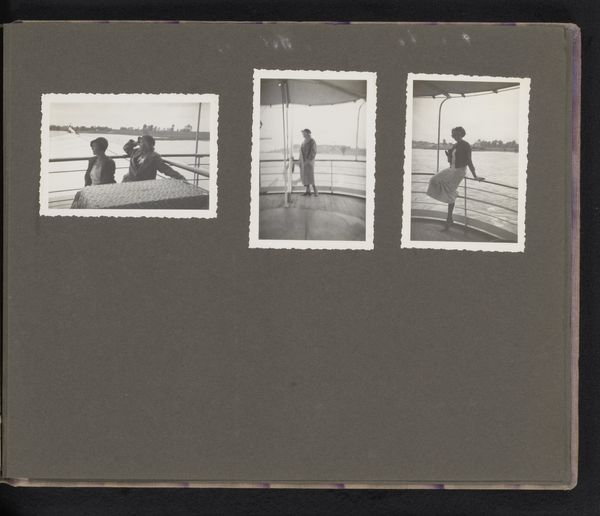
photography
#
portrait
#
still-life-photography
#
photography
#
genre-painting
#
modernism
Dimensions: height 221 mm, width 320 mm
Copyright: Rijks Museum: Open Domain
Curator: Welcome. Before us, we have Herman Besselaar’s 1937 photography piece entitled "Vijf portretten van Berti Hoppe in huis in verschillende klederdrachten"—"Five Portraits of Berti Hoppe at Home in Different Costumes," rendered in gelatin silver print. My initial impression is a rather melancholic sense of repetition. The muted tones, the confined spaces, and the recurring figure lend an almost spectral quality. Editor: I find myself wondering about the act of making here, thinking about Hoppe in that studio. This setup—the bookcase, the furniture—it feels constructed, presented. What sort of relationship existed between the photographer and his subject, and what role did labor, performance, and costume play here? Curator: The stark geometry of the shelving interacts dynamically with the flowing silhouettes of Hoppe’s dresses, creating both unity and dissonance. Note the variation in attire, seemingly highlighting different facets of identity within the unified space. Each costume, although suggestive of variation, ultimately reinforces the overall structure. Editor: Yes, but let’s think further about that structure: the role of costume here suggests something deeply artificial about this vision. Where did the materials come from? How did Besselaar dictate Hoppe's presentation and stance within this carefully chosen context, considering the socioeconomic situation of 1937? The means by which the pictures were constructed is paramount. Curator: Undeniably, but such constraints further emphasize Besselaar's meticulous manipulation of line and light. The consistent framing across all five images further isolates Hoppe, elevating her to a figure ripe for structural analysis. How is gender constructed in relation to these repetitive interiors and controlled expressions? Editor: But perhaps it also hints at Besselaar’s awareness of photographic portraiture itself as a construction, playing into the tension between ‘fine art’ and applied photographic work, commercial images for theatre perhaps? Those ‘costumes’ give more clues when we understand how photography shaped consumerism. What stories were being manufactured then? Curator: Those implications do introduce compelling ideas that could be seen within this modern portraiture and, indeed, invite further investigation of interconnections embedded in modernism's many layers. Thank you for those further dimensions. Editor: Indeed, it only opens to deeper contemplation of artistic expressions through the lens of material and social awareness.
Comments
No comments
Be the first to comment and join the conversation on the ultimate creative platform.

